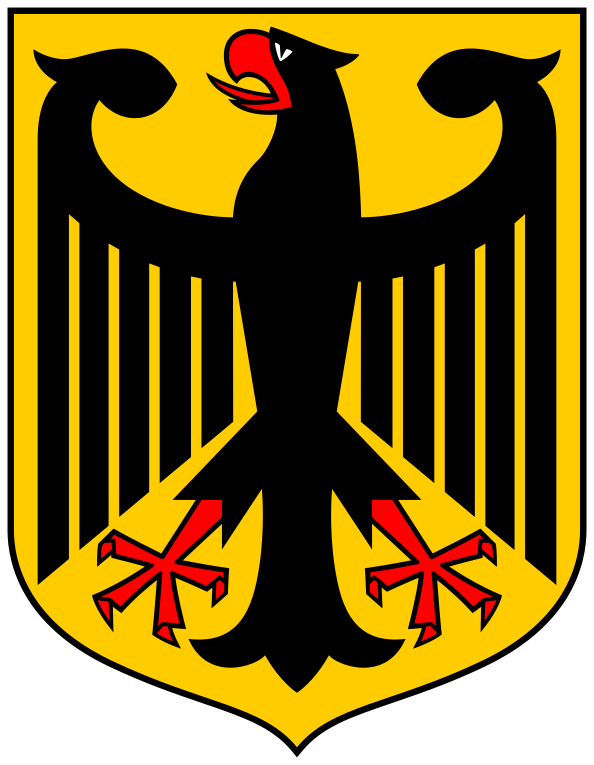
Germany’s national symbols and coat of arms carry deep historical significance, reflecting centuries of political, cultural, and social evolution. From the majestic Black Eagle to the striking colors of the German flag, these symbols have undergone transformations while maintaining their national identity. In this article, we will explore the history and meaning of the German coat of arms and its other national symbols, uncovering how they have shaped the country’s identity over time.
The Evolution of the German Coat of Arms
1. The Early Medieval Origins
The origins of the German coat of arms trace back to the Holy Roman Empire (962–1806), where emperors used various heraldic symbols to assert their authority. The earliest representation of Germany’s emblem was the single-headed black eagle, a symbol of power and divine rule.
- The eagle has long been associated with strength, freedom, and sovereignty in Germanic and Roman traditions.
- Emperor Frederick Barbarossa (1155–1190) was among the first to officially use the black eagle in his seal.
- Over time, the eagle’s design evolved, incorporating changes in wing shape, crown size, and shield details.
2. The Double-Headed Eagle of the Holy Roman Empire
By the 14th century, the double-headed eagle became the primary symbol of the Holy Roman Empire, representing the emperor’s dual rule over both secular and spiritual realms.
- The double-headed eagle was officially adopted in 1433 under Emperor Sigismund.
- It symbolized the unity of church and state and was prominently displayed on imperial banners and coats of arms.
- The emblem remained in use until the dissolution of the Holy Roman Empire in 1806.
3. The Prussian Influence and the German Empire (1871–1918)
With the unification of Germany in 1871, the newly established German Empire revived the use of the eagle, albeit with Prussian influences.
- The black eagle with a golden background was maintained, but Prussia’s symbols were incorporated into the design.
- Kaiser Wilhelm II’s rule saw modifications that enhanced the imperial prestige of the eagle, including an ornate chest shield and additional embellishments.
- After World War I, the monarchy was abolished, and the Weimar Republic simplified the coat of arms to a single-headed black eagle, symbolizing democracy and national unity.
4. The Nazi Era and Post-War Changes (1933–1945)
During Nazi Germany, the Reichsadler (Imperial Eagle) was used, but it became associated with the Nazi party, often depicted clutching a swastika.
- Following Germany’s defeat in World War II, the emblem was banned due to its Nazi associations.
- In 1950, West Germany reinstated the Weimar-era black eagle, distancing itself from the controversial past while retaining national identity.
Other National Symbols of Germany
1. The German Flag
The national black-red-gold tricolor flag originated from the 19th-century liberation wars against Napoleonic rule and became the official national flag in 1949.
- Black: Stands for determination and resilience.
- Red: Represents unity and the bloodshed for freedom.
- Gold: Symbolizes prosperity and democracy.
2. The German National Anthem
The song “Das Lied der Deutschen” (Song of the Germans), written in 1841, became the official national anthem in 1922. However, only the third stanza, emphasizing unity, justice, and freedom, is sung today.
3. The Oak Tree
The oak tree symbolizes strength, endurance, and national pride. It has been used in German iconography, literature, and currency.
4. The Brandenburg Gate
One of Germany’s most recognized landmarks, the Brandenburg Gate, has evolved from a royal city entrance to a symbol of German unity, particularly after the fall of the Berlin Wall in 1989.
The Symbolism of German National Identity
German national symbols reflect the country’s tumultuous history and commitment to democracy. The eagle, once a sign of imperial power, has been redefined as a representation of democratic values and national unity. Similarly, the flag and national anthem have evolved to reflect Germany’s post-war identity and global standing.
From its origins in the Holy Roman Empire to its modern democratic form, the German coat of arms continues to symbolize strength, unity, and resilience. Alongside national symbols like the flag, oak tree, and Brandenburg Gate, Germany’s identity is deeply rooted in its historical evolution.
Interested in learning more about Germany’s rich cultural heritage? Explore our other articles on:
